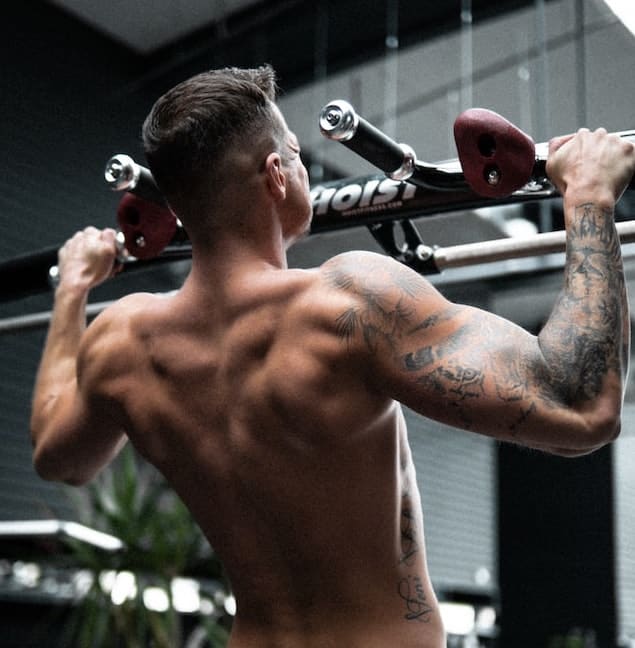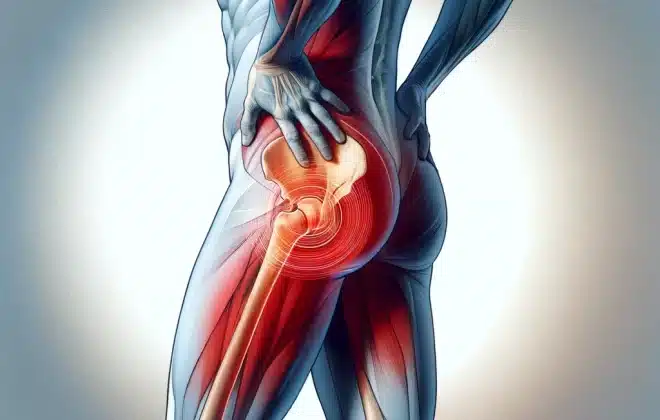The Ultimate Guide To Back and Shoulder Exercises to Build Muscle Fast

Building muscle in the back and shoulder area is a common goal for many fitness enthusiasts. Strong back and shoulder muscles not only improve posture and athletic performance, but they also contribute to an overall balanced and aesthetically pleasing physique.
However, with so many exercises and workout programs available, it can be overwhelming to know where to start or which exercises to prioritize.
In this ultimate guide, we will provide a comprehensive overview of the most effective back and shoulder exercises to build muscle fast, as well as tips on proper form, programming, and nutrition to maximize your results.
Whether you are a beginner or a seasoned gym-goer, this guide has something for everyone looking to enhance their back and shoulder muscle development.
The Importance Of A Strong And Muscular Back
Having a strong and muscular back is essential for overall health and fitness. Not only does it lead to improved posture, but having stronger shoulder muscles also helps you perform everyday activities with ease. Plus, when your back and shoulders have increased resting muscle tone, you look more impressive in the gym or at the beach!
But getting those chiseled back muscles isn’t as easy as it looks. To achieve serious strength and definition in your upper body you need to focus on specific exercises that target both your shoulder muscles and your back muscles.
An effective workout should include a good variety of movements including, but not limited to things like overhead presses, rows and pull-ups (for starters), all of which will help build both muscle size and power.
The best way to maximize results from these exercises is to begin with lighter weights so you can perfect form before adding heavier ones for increased intensity. Make sure to keep good posture throughout each repetition too – this will ensure maximum benefit from every exercise and reduce the risk of training setbacks.
By incorporating the right protocol into your training program, you can quickly generate progress towards achieving the physique of your dreams.
Back And Shoulder Workout: The Basics
Before diving into the nitty-gritty of exercise selection and program design, we should start with a quick primer on the basics. Here are some basics tips for getting started with your own back and shoulder workout:
1) Invest in good equipment – Having the right tools can make all the difference when it comes to working out. Investing in quality weights and machines will ensure that you get the most out of your training sessions since you’ll be able to push yourself further without having to worry about safety or injury.
2) Focus on form first – Proper technique is essential when doing any kind of exercise; focusing on perfecting each rep before adding weight helps minimize risk of injury while maximizing results. Take time to learn proper form (hire a certified personal trainer if needed) so that you can confidently perform each movement with optimal technique.
3) Mix up your exercises regularly (but not EVERY workout) – Trying different movements not only keeps things interesting but also provides an opportunity for targeted muscle growth as well as overall body sculpting. There are a bazillion ways to vary your workouts, from exercise variety to repetition and set schemes.
TIP: Keep track of your progress by keeping a journal of how many reps/sets you do during each session – this way you know whether or not you need to increase weight/reps or decrease them depending on what goals you have set out for yourself!
Training Volume And Recovery
It’s important to remember that the goal of any workout routine is to create progressive overload. To do this, you’ll need to balance out your training volume with sufficient rest and recovery time over time.
When it comes to back exercises, compound movements such as deadlifts and pull-ups will help target multiple upper back muscles at once while also giving your trapezius a good challenge. These are excellent movements, but also require MORE recovery than when training smaller muscle groups. (2-3 x per week).
Isolation exercises like bicep curls, DB shoulder side lateral raises, and calf raises are less taxing, and therefore can be trained more frequently. (For example every other day).
There are ways to maintain a higher training frequency without slowing down your results. This is why having an effective post-workout routine is key; incorporating active stretches (such as upper trap stretches) after lifting can reduce soreness by loosening tight muscles while foam rolling can provide relief from excess muscle tension and trigger points that are often sensitized by high volume training programs. Massage therapy can also be an amazing recovery tool to utilize.
Warming Up
Before you can get started on any back and shoulder workout, it’s essential to warm up properly. Warming up helps your body prepare for the upcoming physical activity by increasing muscle temperature which in turn improves flexibility and reduces the risk of injury.
To begin, start with a light jog or brisk walk for 5 minutes followed by some dynamic stretches that target the upper arms and shoulders such as arm circles or overhead reaches. This should be done slowly at first, gradually building intensity until all muscles are warmed up nicely.
Additionally, make sure you’re maintaining correct posture while stretching; its the perfect time to work on body mechanics before you start loading your tissues.
The next step is to move into an active warm-up specifically tailored towards the exercises you’ll be performing during your shoulder workout routine. For example, if you plan on doing pull-ups then knock out a few lat pulldowns to prime the tissues and establish the mind-muscle connection.
By completing these steps prior to lifting weights, you’ll not only reduce soreness after working out but also increase strength gains over time due to increased range of motion in muscles.
Best Back And Shoulders Exercises
Pullup

The Pullup is a bodyweight exercise that works the arms, shoulders, back, and core muscles. It is an effective way to build upper body strength and can be done with or without additional weight.
How-to Instructions:
1. Start by hanging from a pull-up bar with an overhand grip, hands slightly wider than shoulder width apart.
2. Engage your core and keep your legs straight and together.
3. Pull your body up until your chin is over the bar.
4. Slowly lower your body back down to the starting position.
5. Repeat for the desired number of repetitions.
Lat Pulldowns
The lat pulldown is a great exercise for strengthening the back and developing upper body strength. It is an excellent choice for any fitness regimen.
The lat pulldown targets the latissimus dorsi.
How-To Instructions:
1. Position yourself in the lat pulldown machine, with your feet flat on the floor and knees bent at a 90 degree angle.
2. Grasp the bar with an overhand grip, slightly wider than shoulder-width apart.
3. Keeping your chest up and core tight, pull the bar down to your chest while squeezing your shoulder blades together.
4. Slowly return to the starting position.
5. Repeat the exercise for the desired number of repetitions.
Barbell Row
The barbell row is a compound exercise that targets the back, biceps, and core muscles. It is a great exercise for strengthening and building muscle in these areas.
How-To Instructions:
1. Begin by standing with your feet hip-width apart, toes pointing forward. Hold a barbell with an overhand grip, just wider than shoulder-width apart.
2. Hinge forward at the hips, keeping your back flat and chest up. Allow the barbell to hang in front of you, arms extended.
3. Pull the barbell up towards your mid to lower abdomen, leading with your elbows. Keep your core engaged and squeeze your shoulder blades together at the top of the movement.
4. Slowly lower the barbell back down to the starting position.
5. Repeat for desired number of reps.
Dumbbell row
The dumbbell row is an effective strength-training exercise that targets the back muscles, specifically the lats and rhomboids. It is a great exercise for improving posture, strength, and stability.
How-To Instructions:
1. Start by standing with feet hip-width apart, knees slightly bent.
2. Bend at the hips and lower your torso until it is as parallel as possible to the ground.
3. Keeping your back flat, extend your arms with the dumbbells and pull them up towards your mdi to lower abdomen.
5. Squeeze your shoulder blades together and pause for a moment before slowly lowering the dumbbells back to the starting position.
6. Repeat the motion for the desired number of repetitions.
Shrugs
Shrugs are a simple yet effective exercise that targets the trapezius muscles in the neck and shoulders. The shrug exercise can help build strength in the upper body and improve posture.
How-To Instructions:
1. Stand tall with your feet hip-width apart and your arms resting at your sides.
2. Raise your shoulders up towards your ears, making sure to keep your neck straight.
3. Hold the shrug for a few seconds, then slowly lower your shoulders back to the starting position.
4. Repeat for desired number of reps.
Back Extensions
45 degree back extensions are an exercise that involves stretching and strengthening the muscles in your lower back extensors, glutes, and hamstrings. They require the use of a 45 degree angled bench.
How-To Instructions:
1. Start by positioning yourself on a 45 degree back extension machine. Place your feet on the platform and adjust the height so that your hips are slightly lower than the pad.
2. Cross your arms over your chest, or hold a weight plate to your chest for added resistance.
3. Slowly lower your upper body towards the ground, hinging at the hips and keeping your back straight.
4. Pause briefly at the bottom of the movement, and then exhale as you use your lower back and glutes to lift your upper body back up to the starting position.
5. Repeat for the desired number of repetitions.
Overhead press
The overhead press is a compound strength training exercise which primarily targets the shoulder muscles, as well as the triceps and a bit of the chest muscles.
How-To Instructions:
1. Start by standing upright with your feet shoulder-width apart.
2. Take a deep breath and grip the barbell with an overhand grip, your hands slightly wider than shoulder-width apart.
3. Using your legs, lift the barbell up to your upper chest.
4. Brace your core and press the barbell upwards above your head.
5. Keep your arms close to your ears and elbows pointed slightly outward.
6. Lower the barbell back to your upper chest and repeat.
Dumbbell Lateral Raises
Dumbbell lateral raises are a strength exercise that targets the muscles of the shoulders, specifically the lateral deltoids.
How-To Instructions:
1. Stand with feet shoulder-width apart, holding a pair of dumbbells at your sides.
2. Keeping your elbows slightly bent, raise your arms out to the sides until your elbows are parallel with the ground.
3. Pause for a moment at the top then slowly lower the dumbbells back to the starting position.
4. Repeat for desired number of repetitions.
Seated Cable Rows
Seated cable rows are a great exercise to target the muscles of the upper back and arms as well as an excellent shoulder exercise. This exercise is done using a cable machine and involves you sitting on a bench and pulling a weight towards your chest with both arms.
How-to Instructions:
1. Start by sitting on a bench in front of a cable machine with a weight plate attached to the cable.
2. Grab the handle of the cable with both hands, making sure your palms are facing each other.
3. Sit up straight and keep your back straight throughout the exercise.
4. Begin to pull the weight towards your chest by bending your elbows, squeezing your shoulder blades together.
5. Hold the contraction for a second and then return to the starting position.
6. Repeat for the desired number of repetitions.
One-Arm Dumbbell Rows
One-arm Dumbbell Rows is a great exercise for targeting the back muscles, specifically the lats, traps and rhomboids.
How-to Instructions:
1. Start by standing with your feet hip-width apart and holding a dumbbell in one hand.
2. Bend your knees slightly and hinge forward at the waist, keeping your back straight and core engaged.
3. Allow your free arm to hang down and reach the dumbbell toward the floor.
4. Begin the exercise by driving your elbow up and back, keeping your arm close to your body.
5. As you drive your elbow up and back, squeeze your back muscles and focus on pulling your shoulder blade back and down.
6. Lower the weight back down to the starting position and repeat on the same side for the desired number of repetitions.
7. Once you have finished the desired number of repetitions, switch to the other side and repeat the same steps.
Seated Front Dumbbell Press
Seated Front Dumbbell Press is a great exercise for building strength and size in the shoulders. It is an isolation exercise that focuses on the front deltoids. The exercise is performed while seated on a bench and requires a pair of dumbbells.
How-To Instructions:
1. Begin by sitting on a flat bench with a dumbbell in each hand. The dumbbells should be held at shoulder height, with your palms facing forward.
2. Keeping your back straight, press the dumbbells up towards the ceiling until your arms are fully extended.
3. Lower the dumbbells back to shoulder height and repeat.
4. Make sure to keep your chest up, core engaged, and avoid arching your back during the movement.
5. Repeat for the desired number of repetitions.
Frequently Asked Questions
What Is The Best Way To Track My Progress While Doing Back And Shoulder Exercises?
Staying motivated while building muscle can be a difficult task, especially when you can’t see the progress in the mirror on a day-to-day basis. It’s important to track your progress in order to stay on top of the goals you’ve set for yourself. But how do you go about doing this? How do you measure the success of your hard work?
The best way is to keep a journal and tracking your performance with reps and sets that will give you an idea of where your current fitness level stands compared to earlier sessions. Taking notes during workouts can also help remind you which exercises were most beneficial so that they can be replicated in future training sessions.
These simple steps will provide insight into what works best for your individual fitness journey, allowing you to make adjustments along the way as needed. By keeping detailed records of these measures over time, you’ll have a better understanding of both short-term and long-term gains – giving you the confidence boost necessary to keep working toward achieving those desired results!
How Much Time Should I Spend On Each Exercise?
For those aspiring to build muscles through back and shoulder exercises, it is essential to understand how much time should be dedicated to each workout. Undoubtedly, the amount of time spent on an exercise can make or break results. Therefore, striking a balance between focus and intensity is paramount for success.
Achieving muscle building goals requires dedication and commitment in order to obtain desired outcomes. Depending on individual needs, some may require more intense workouts than others; however, allocating an adequate amount of time during exercise sessions will help ensure progress towards these objectives.
Understanding key concepts such as progressive overloads and periodization so that individuals have access to personalized plans tailored specifically towards their own fitness ambitions.
All these considerations must come together harmoniously in order for individuals to reach peak performance levels both physically and mentally in the most efficient way possible while minimizing wasted time in the gym!
What Specific Exercises Can I Do To Target My Lower Back Muscles?
Do you want to target your lower back muscles? If so, there are a few specific exercises that can help you do just that. Deadlifts, 45 degree back extensions, and glute hip thrusts can be extremely helpful at building up lower back muscles.
Its important to keep in mind that all upper back exercises will involve the lower back to some degree as well.
How Many Days Per Week Should I Dedicate To Back And Shoulder Workouts?
If you want to build strong muscles in your back and shoulders, an important question arises: How many days per week should I dedicate to back and shoulder workouts? The answer may differ depending on the individual’s goals, existing level of fitness, lifestyle factors, and other variables.
To figure out what works best for you, consider these three points:
• Assess how frequently you can commit to a dedicated workout program without compromising recovery time or risking burnout.
• Consider any limitations such as preexisting injuries that might prevent frequent exercises.
• Evaluate whether additional rest days are necessary between sessions if you plan to use heavy weights or high intensity interval training (HIIT).
The frequency of your back and shoulder workouts will determine their effectiveness in building muscle fast. During each session, aim for multiple sets with moderate-to-heavy weight at 8–15 repetitions per set.
With this information in mind, it’s up to you to decide which approach works best for your specific needs. If possible, start by committing to two full-body workouts per week — one focused on upper body muscles including your back and shoulders; the second focusing on lower body strength — then assess how much progress you make after six weeks using this framework.
From there, adjust your schedule accordingly based on results so that you can continue making steady progress toward reaching your goals!
What Can I Do To Prevent Injuries While Exercising My Back And Shoulders?
When it comes to exercising your back and shoulders, safety should always come first. A little preparation can go a long way in helping prevent potential injuries while working out these important muscle groups. But what can you do?
Take time to warm up before getting stuck into any back or shoulder workout routine – this is essential if you want to avoid straining those muscles! Spend 5-10 minutes doing light stretches and dynamic movement such as arm circles, shoulder rolls and trunk rotations.
Not only will this help reduce your chances of injury but it also helps increase blood flow and lubricates joints in order to improve performance during exercise. It’s like revving an engine before hitting the gas pedal; don’t skip this step if you want your body ready to deliver its peak performance!
Equally important is form when performing back or shoulder exercises. Good technique is key – use slow to moderate speeds so that each rep is done correctly rather than rushing through sets with poor posture and form. This helps ensure that you’re targeting the correct muscles, prevents incorrect loading on joints and ligaments and ultimately leads to better results from your training session!
Make sure to listen closely when being guided by a certified trainer who understands which types of exercises are best for building strength safely – a qualified fitness professional can provide invaluable insight here.
To sum up then, warming up prior to exercise, using good form throughout reps and following instructions from knowledgeable trainers are all crucial aspects of keeping safe while working out your back and shoulders. When taken together they create an effective framework that lets you focus on pushing yourself further towards achieving whatever goals you have set out for yourself – while avoiding any unnecessary risks along the way.
Conclusion
Well, there you have it – the ultimate guide to building muscle fast with back and shoulder exercises. Now that you know what to do, don’t forget: progress tracking is essential for seeing results! It’s not enough just to go through the motions; make sure you’re marking your milestones and successes along the way so you can keep up the momentum.
Sam Visnic
Most Popular Posts
Categories
- Deep Gluteal Pain Syndrome (8)
- Deltoids (2)
- Foam Rolling (2)
- Glutes (9)
- Hamstrings (5)
- Hypnosis for Pain (3)
- Lats (2)
- Levator Scapulae (4)
- Lifestyle (8)
- Massage Therapy (39)
- Mobility (21)
- Movement and Exercise (19)
- Muscles (22)
- Nutrition (2)
- Obliques (1)
- Pain (25)
- Pectorals (3)
- Piriformis (3)
- Plantar Fasciitis (11)
- Psoas (11)
- Quadratus Lumborum (3)
- Quadriceps (2)
- Rhomboids (3)
- Sciatica (1)
- Serratus Anterior (1)
- SI Joint (14)
- Sternocleidomastoid (1)
- Stretching (18)
- Subscapularis (1)
- TMJ (2)
- Trapezius (1)
- Uncategorized (12)









